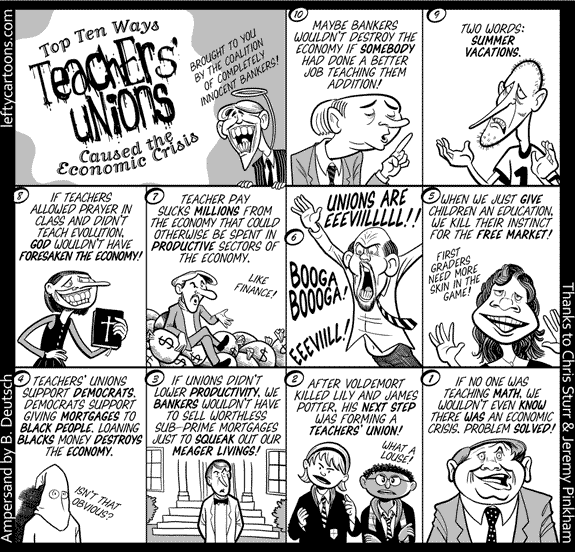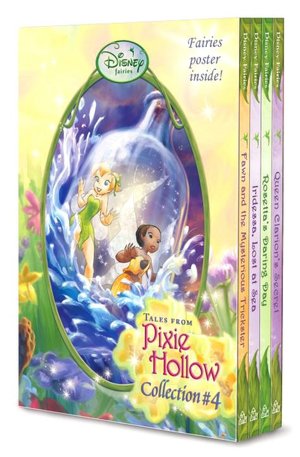So every area in academia and politics has specific language and jargon. Sometimes this helps aid the clarity of those who work in such fields, like education. However, sometimes it's used to get support for things that people wouldn't support. So here's an explanation of various educational terms (with a slightly comedic interpretation).
Accommodation = Changes in teaching practices and assessments/tests that allow for equality for children with differing abilities (disabilities) or who speak English as a second language. As I've said elsewhere, they don't go far enough.
Accountability = TESTING!!!! All the tests ever!!! Whether they're talking about teacher, student, or school accountability they really mean high stakes test that decide student advancement, teacher and principle pay and employment, and school funding.
Adequate Yearly Progress (AYP) = How schools do on the high stakes tests. It's the minimum amount of achievement needed to meet NCLB (No Child Left Behind) and get Title I funding.
Alignment = How well curriculum, assessment, instruction, and tools (like text books) meet and reinforce the goals of the educational program or government. In practice it often means teaching to the test so that teachers and principles keep their jobs and the school doesn't lose funding.
Assessment = A way to see if students have actually learned what they were taught. It can involve essays, portfolios, and various forms, currently it means TESTS!!!!
Benchmarks = Detailed descriptions of what students should know and be able to do at specific ages, grades, and/or development levels.
Categorical Aid = Federal and State funds that go to schools to help them in specific areas, such as making accommodation for kids with special needs, transportation, class size reduction. Money must be spent on the area if was granted for.
Comparable Growth = certain subgroups of children (like English as a second language, or kids with special needs) within a school who have different requirements for standardized tests. Generally expected to achieve 80% of the predominate group, generally only 10-15% of the students in any school can be in comparable growth subgroups, which is a big old problem when 20% of students have some type of special need, and in some areas almost half of the students are ESL (English as a Second Language).
Core/Common Core - The new tests address these over the previous NCLB tests and standards. Always includes English and Math, along with Science and History/Social Studies for older students.
Differentiation = Used mainly in academics, haven't seen this term in politics yet. It means class curriculum and assignments being geared towards the differing abilities of the students within one class.
Disaggragated Data = Comparing students and their stats within their subgroups, instead of the entire school population. Generally segments include students with special needs, living below of near poverty, are a racial or ethnic minority, and are ESL.
ESL/ English as a Second Language - Extra classes or aids to help children who comes from countries or homes where English is not spoken. Children have only two years of ESL classes before they are expected to take high stakes tests in English without any accommodation or inclusion in a comparable growth subgroup.
Enrichment = Additional courses and programs outside of what is needed for graduation or the high stakes testing. What I do, and because it's not about TESTING! it's severally underfunded, and generally left to after school and outside volunteer groups to perform.
GATE/ Gifted And Talented Education = Program that provides enrichment, differentiated lessons, and supplemental instruction for children that are identified as intellectually gifted and talented and thus test/achieve academically above the majority of children in their grade.
High Priority = Schools/students/what have you that test in the lower half, generally the bottom 10% based on state and school standards.
Inclusion = Also known as mainstreaming. Kids with special needs are in the standard classrooms instead of a Special Ed. classroom.
IEP / Individual Educational Plan = Plans made to meet the various needs of students with differing abilities. Designed between the student's parents, teacher, the school special education specialist, and school administrators. The participation levels of the student depend on their age and abilities.
Integrated Curriculum = Involves using one theme to teach a variety of subjects and skills. English teachers using Health and biology to teach reading and essays while the students are also learning about the human body is an example.
Intervention = Refers to funds schools get to meet the needs of students who are not achieving at grade level. Cannot be used as schools general funds, but specifically for the needs of the students its allocated for, so a type of Categorical Aid.
Magnet School = School that focuses on a specific discipline like science, technology, the arts, etc and it recruits students from other parts of the school district.
NCLB/ No Child Left Behind - The educational reforms that became law under George W. Bush in 2002. Brought the TESTING! mania to the national level. Has since been reformed with Race to the Top and the idea of the common core.
Proficiency = Ability to do something at grade level. Determined by high states standardized tests.
Pull Out = Students who need special assistance are pulled out of class for small group activities/learning. Unlike the sex kind of pull out, these programs are effective.
Rubric = A set scoring or grading system that is supposed to set criteria and the quality for those criteria.
Standards = These really mean state and federally crafted standards that are often created and/or influenced by politicians are opposed to educators. Because politicians are experts on everything!
Accommodation = Changes in teaching practices and assessments/tests that allow for equality for children with differing abilities (disabilities) or who speak English as a second language. As I've said elsewhere, they don't go far enough.
Accountability = TESTING!!!! All the tests ever!!! Whether they're talking about teacher, student, or school accountability they really mean high stakes test that decide student advancement, teacher and principle pay and employment, and school funding.
Adequate Yearly Progress (AYP) = How schools do on the high stakes tests. It's the minimum amount of achievement needed to meet NCLB (No Child Left Behind) and get Title I funding.
Alignment = How well curriculum, assessment, instruction, and tools (like text books) meet and reinforce the goals of the educational program or government. In practice it often means teaching to the test so that teachers and principles keep their jobs and the school doesn't lose funding.
Assessment = A way to see if students have actually learned what they were taught. It can involve essays, portfolios, and various forms, currently it means TESTS!!!!
Benchmarks = Detailed descriptions of what students should know and be able to do at specific ages, grades, and/or development levels.
Categorical Aid = Federal and State funds that go to schools to help them in specific areas, such as making accommodation for kids with special needs, transportation, class size reduction. Money must be spent on the area if was granted for.
Comparable Growth = certain subgroups of children (like English as a second language, or kids with special needs) within a school who have different requirements for standardized tests. Generally expected to achieve 80% of the predominate group, generally only 10-15% of the students in any school can be in comparable growth subgroups, which is a big old problem when 20% of students have some type of special need, and in some areas almost half of the students are ESL (English as a Second Language).
Core/Common Core - The new tests address these over the previous NCLB tests and standards. Always includes English and Math, along with Science and History/Social Studies for older students.
Differentiation = Used mainly in academics, haven't seen this term in politics yet. It means class curriculum and assignments being geared towards the differing abilities of the students within one class.
Disaggragated Data = Comparing students and their stats within their subgroups, instead of the entire school population. Generally segments include students with special needs, living below of near poverty, are a racial or ethnic minority, and are ESL.
ESL/ English as a Second Language - Extra classes or aids to help children who comes from countries or homes where English is not spoken. Children have only two years of ESL classes before they are expected to take high stakes tests in English without any accommodation or inclusion in a comparable growth subgroup.
Enrichment = Additional courses and programs outside of what is needed for graduation or the high stakes testing. What I do, and because it's not about TESTING! it's severally underfunded, and generally left to after school and outside volunteer groups to perform.
GATE/ Gifted And Talented Education = Program that provides enrichment, differentiated lessons, and supplemental instruction for children that are identified as intellectually gifted and talented and thus test/achieve academically above the majority of children in their grade.
High Priority = Schools/students/what have you that test in the lower half, generally the bottom 10% based on state and school standards.
Inclusion = Also known as mainstreaming. Kids with special needs are in the standard classrooms instead of a Special Ed. classroom.
IEP / Individual Educational Plan = Plans made to meet the various needs of students with differing abilities. Designed between the student's parents, teacher, the school special education specialist, and school administrators. The participation levels of the student depend on their age and abilities.
Integrated Curriculum = Involves using one theme to teach a variety of subjects and skills. English teachers using Health and biology to teach reading and essays while the students are also learning about the human body is an example.
Intervention = Refers to funds schools get to meet the needs of students who are not achieving at grade level. Cannot be used as schools general funds, but specifically for the needs of the students its allocated for, so a type of Categorical Aid.
Magnet School = School that focuses on a specific discipline like science, technology, the arts, etc and it recruits students from other parts of the school district.
NCLB/ No Child Left Behind - The educational reforms that became law under George W. Bush in 2002. Brought the TESTING! mania to the national level. Has since been reformed with Race to the Top and the idea of the common core.
Proficiency = Ability to do something at grade level. Determined by high states standardized tests.
Pull Out = Students who need special assistance are pulled out of class for small group activities/learning. Unlike the sex kind of pull out, these programs are effective.
Rubric = A set scoring or grading system that is supposed to set criteria and the quality for those criteria.
Standards = These really mean state and federally crafted standards that are often created and/or influenced by politicians are opposed to educators. Because politicians are experts on everything!



